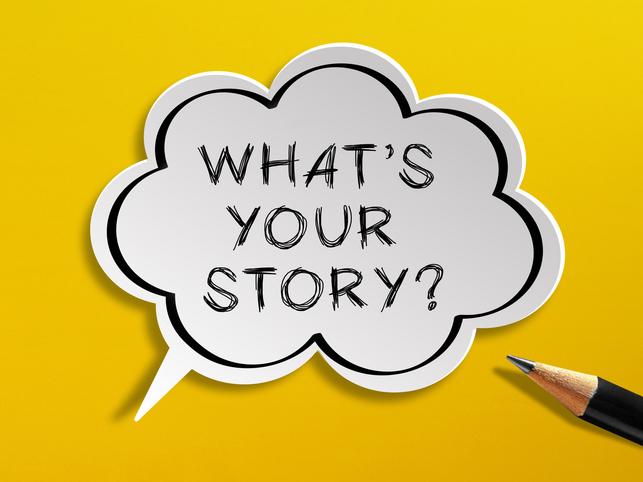
How authentic stories can empower the ‘unheard voices’
Storytelling is a meaningful activity that we all do. We all want to hear each other’s stories. It’s a fundamental aspect of human communication.
We remember the stories we are told. We identify with them and are intrigued. We wonder what else there is to know. Stories can inspire us, frighten us or challenge us to take action.
Franklin D. Roosevelt famously used storytelling to build trust and support for his policies. With his “fireside chats” – radio broadcasts that conveyed complex issues in a conversational manner – the US president during the Great Depression and the Second World War connected with the general public.
Organisations often turn to storytelling because it engages people on an emotional level much more than statistics ever can. If consumers share a brand story with their personal networks, it lends greater value and authenticity than standard marketing communications can ever achieve.
- Why the ‘machine says no’: how asking for less can get you more…
- Transition from expert to guide by embracing generative AI
- How small universities can make big digital changes
More fundamentally, storytelling can be a powerful means of generating wider acceptance of difficult culture-change projects. Stories can provide a way for leaders to communicate openly and authentically, fostering trust among employees. When people understand the context and reasons behind the change, they are more likely to trust the leadership and the process. Stories can open up a dialogue; they provide a platform for discussions, questions and feedback, creating a more interactive and inclusive environment.
But is it really that simple?
When proposing change, leadership needs people to take notice of the communication and to respond accordingly. This is particularly important when we consider the contemporary working environment within universities. Decision-makers often jump from online meeting to online meeting, multitasking where they can during presentations to get rid of multiple pinging chat messages or a stream of emails. In such environments, storytelling clearly has a role in getting important messages through the clutter and making appropriate action more likely to be taken.
But what if the audience interprets the “story” in multiple ways? Or what if the credibility of the storyteller is compromised in some way? How might leadership’s “official story” be challenged and changed by others with “alternative stories”?
In the next section, we apply storytelling to the challenges of digital transformation. We draw on brief practical examples that offer different perspectives on successful storytelling. They demonstrate that change requires a lot more than a fireside chat, and stories of lived experience from a range of stakeholders can result in better-quality outcomes.
How storytelling can be an effective catalyst for change
The University of Exeter’s digital team use “stories” to help ensure effective communication. Rather than rely on a lengthy slide deck, they talk informally with distinctive props that are not only memorable but make people more inclined to share the associated key messages.
Internally, this method helps to cut across silos and improve basic communication about what the digital strategy is and why it is important. Externally, the approach has enhanced network building and helped to build a reputation. For example, a recent conference presentation “Telling the story of the stories” resulted in one delegate publicly claiming it was “the best five minutes of the conference”.
Small grants have been made available at the University of Manchester to support educators to undertake person-centred research. The tools they employ – empathy maps, journey maps, systems maps and prototype testing – surface the holistic, human and emotional experiences of what is being investigated. When asked to evaluate success, grant holders identified the collection of stories from students to share with department colleagues in making the case for change. These were stories of the lived experience of a particular institutional problem – for example, poor timetabling or missing accessibility support. They proved to be far more powerful in prompting action from decision-makers than quantitative data or abstract arguments.
At Imperial College, a student complaint in 2016, carefully curated with the assistance of the students’ union, became the totemic catalyst for the director of timetabling to redesign and then digitise examinations timetabling processes to ensure high-quality exam conditions for every student in the future. Phrases such as “drenched in my own sweat” and “my head was spinning” were the essence of the student’s complaint. These were used across dozens of teams with a rawness and authenticity that caused people to put aside their own local processes and design a new student-informed, data-led exam timetabling service that was better for everybody.
Finally, an enthusiastic group of University of Exeter students were instrumental in inspiring change during the Covid-19 pandemic. Their Auditio blog told the stories of staff and fellow students who had addressed challenges of learning and working online during lockdown. In their own words: “Auditio means ‘to listen’ in Latin. That is exactly what this blog is about. We want to share your stories of authentic experiences, learning achievements and all the challenging things along the way.” The personal anecdotes that the students curated and published were powerful in demonstrating that cultural change is not just a top-down initiative but something that everyone can actively contribute to – including, in this case, the “customers” themselves.
What transferable lessons can we glean from these examples?
1. Use a small number of totemic or memorable narratives to engage people and elicit their stories.
2. Find ways to get “hard-hitting” stories from the people who never turn up when needed but who always complain if their problem persists. This means actively seeking out and engaging those affected to curate the story from the input of all stakeholders.
3. Involve all stakeholders in developing the solutions. This means getting them to make the sketches, drawings, wire frames or messy prototypes in order that users shape the solutions.
Craig Walker is a director of HEdway Group. Lisa Harris is director of digital learning at University of Exeter Business School. Sarah Dyer is associate dean for teaching and learning at the University of Manchester.
Sarah Dyer, Craig Walker and Lisa Harris will be among the speakers at Digital Universities UK on 16-18 April at the University of Exeter. Their session is “Ideas that make a real difference”.
If you would like advice and insight from academics and university staff delivered direct to your inbox each week, sign up for the Campus newsletter.





